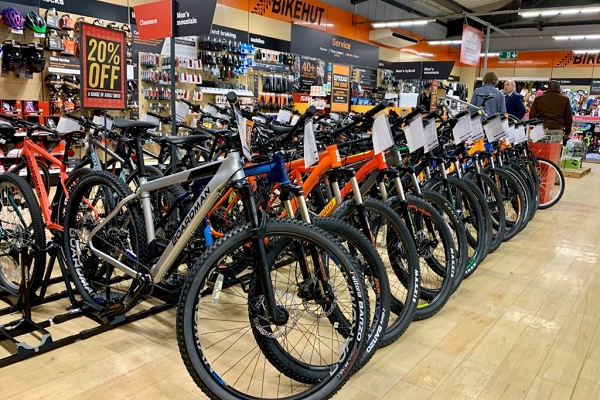According to a blog writer for the NPD Group on NPD.com, the surge in bicycle sales may be ending.
The blog states, “Ever since the pandemic began in March 2020, bicycle sales have surged. Year-over-year sales of bicycles for the 12 months ending April 2021 are up 57 percent to reach $6.5 billion dollars across large-format and specialty retailers.”
The increased sales are believed to be an outgrowth of the COVID-19 pandemic. With the unprecedented surge in sales coming from consumers who are shifting their interest to forms of outdoor, socially distant activities and exercise, many in the industry and at retail have been on high alert looking for signs of when cycling equipment sales might begin to taper off.
April 2021 sales results seem to have signaled the start of that decline, as sales that month were down 22 percent, compared to the same month one year ago. The decline aligns with the recovery of the U.S. economy, as the effects of the pandemic are mitigated. The robust vaccination program in the U.S. means positivity rates are declining, so activities like visiting restaurants, going to gyms and engaging socially without wearing masks are all on the rise.
While reopening may be impacting sales, other factors point to a continued pattern of strong sales for cycling equipment will continue.
First, when comparing bicycle sales in April 2021 to April 2019, sales are up 54 percent. This strong growth rate compared to a “pre-pandemic” April indicates a more durable interest in purchasing than when comparing this year’s sales to April 2020. The reality is that April 2020 bicycle sales were extraordinary when looking at April 2018 and April 2019. In short, comparing current sales to those historically high months in 2020, may provide a “false negative” that the boom is over.
Second, sales of bikes in March 2021 were the highest recorded in the NPD Tracking Service data. These sales likely cannibalized sales that typically take place later in the summer. In fact, overall bike sales were up almost 54 percent compared to March 2020 and 140 percent over March 2019.
NPD’s inventory data, collected from reporting specialty retailers, confirms the surge in sales created an inventory challenge that likely dulled sales in April. Several key bicycle categories, including road bikes and mountain bikes, experienced inventory levels at historic lows for April.
In the case of the increasingly popular eBikes category, where inventory has been replenished, sales were up compared to April 2020 and 2019.
The ongoing strength of sales in bike categories where a pattern of growth was evident prior to the pandemic, available inventory points to a straightforward formula for success for retailers and manufacturers who want to maintain a healthy cycling business.
Essentially, opportunities for growth likely will remain in bike categories like eBikes, mountain bikes, and gravel bicycles that had demonstrated strength of sales prior to the pandemic. To assure long-term growth, careful management of the supply of bikes in the market is required. Undersupply will stifle interest, but an oversupply could result in poor retail margins as retailers try to move products where demand does not align with available supply at retail.
Additionally, each of these categories (eBikes, mountain bikes, and gravel bicycles) was growing prior to the pandemic because brands were demonstrating a cycle of innovation that benefited the rider.
The writer concludes, “It is clear that cycling gained tremendous interest during the pandemic, and consumers seem to still have a desire for purchase. It will be up to the industry and retail community to address supply and innovation, in order to maintain this interest.”








